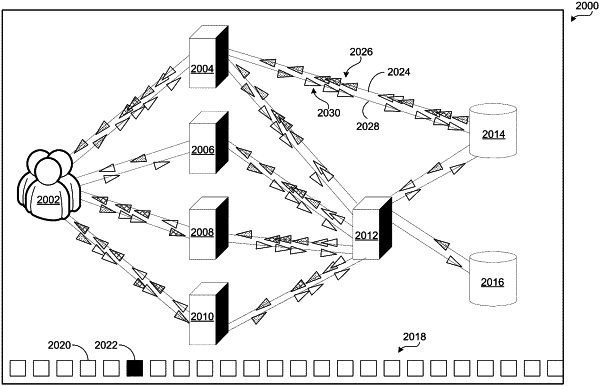| CPC G06T 11/206 (2013.01) [G06F 16/24568 (2019.01); G06F 16/26 (2019.01)] | 17 Claims |

|
1. A computer-implemented method, comprising:
receiving a data structure from a data intake and query system, wherein the data structure includes event stream data associated with a data path, and wherein the data path comprises a set of entities, including an origin entity and a destination entity;
generating a first entity visualization of the origin entity and a second entity visualization of the destination entity;
generating a stream visualization of the event stream data, wherein the stream visualization comprises an animated visualization including one or more events moving between the first entity visualization and the second entity visualization, wherein the stream visualization is associated with a timeline for visualizing a movement of the one or more events over time, wherein the animated visualization including the one or more events moving between the first entity visualization and the second entity visualization comprises a flow of particles streaming from the first entity visualization to the second entity visualization, and wherein the particles have a particle shape and a particle color associated with the data path, wherein the animated visualization including the one or more events moving between the first entity visualization and the second entity visualization comprises a line connecting the first entity visualization with the second entity visualization, and wherein the line comprises a first width at a first end proximate to the first entity visualization and a second width at a second end proximate to the second entity visualization; and
causing the first entity visualization, the second entity visualization, and the stream visualization to be presented in an extended reality (XR) environment.
|